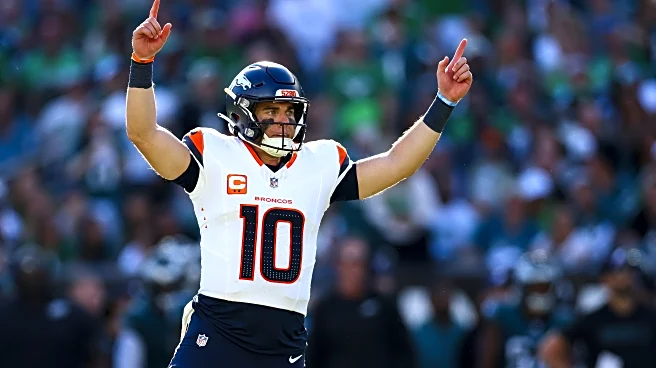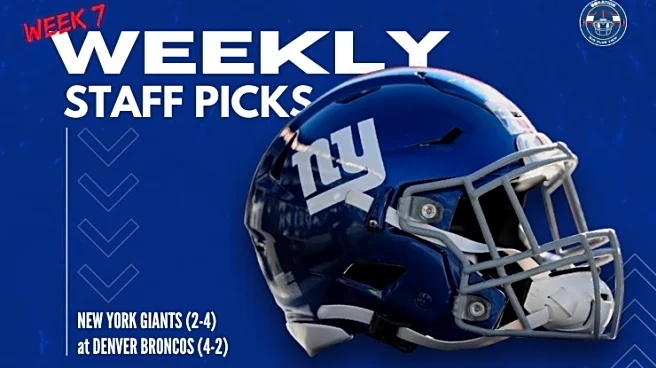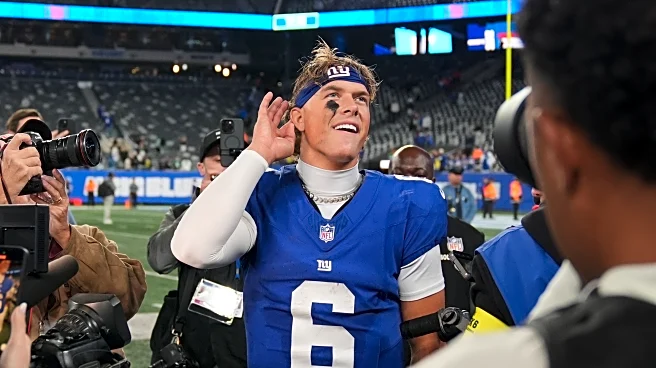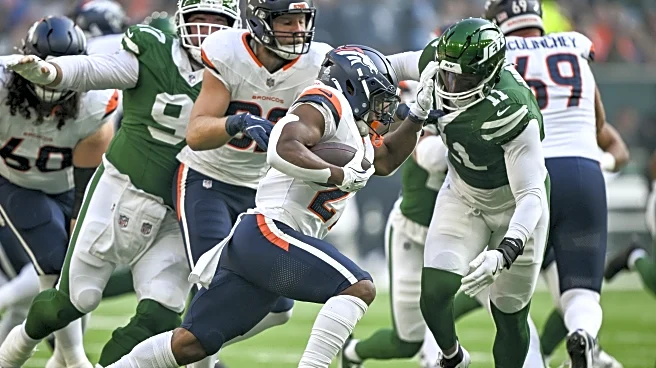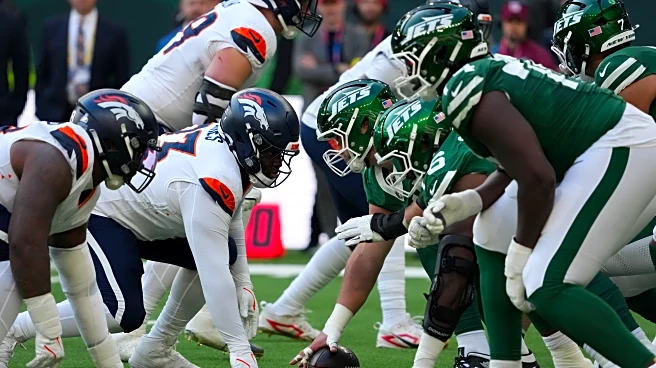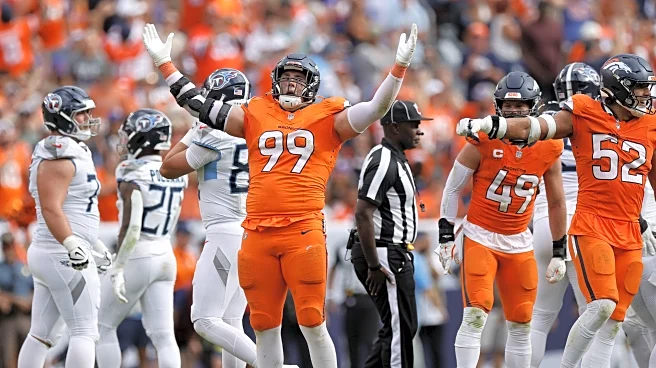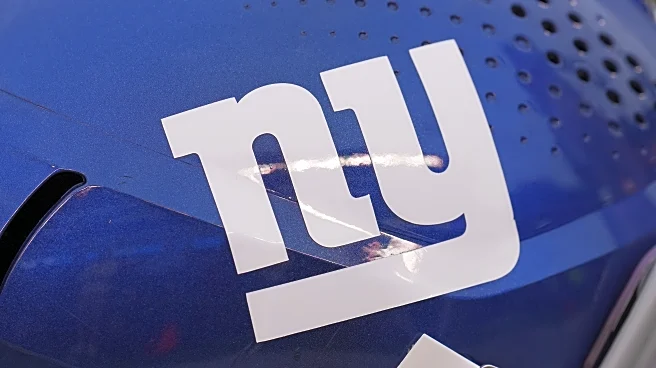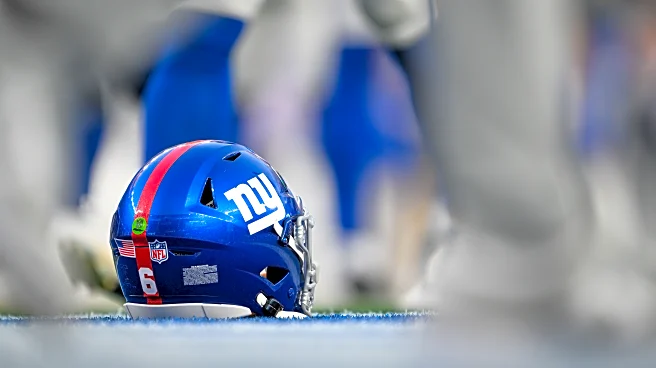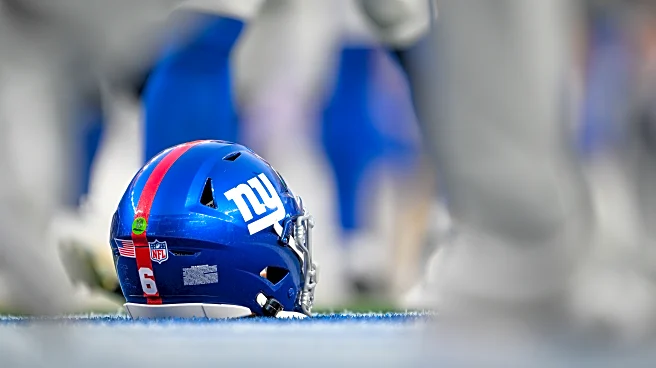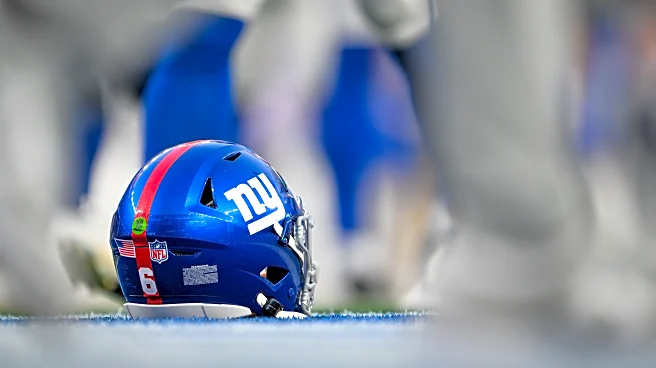The New York Giants are, at this stage of their rebuild, a defensive football team. This week they get a mirror match in the Denver Broncos
It’s true that the offense now boasts a pair of rookie sensations
in Jaxson Dart and Cam Skattebo. Their play, confidence, infectious energy, and “lovable frat bro” attitude has changed the perception of the Giants nearly overnight.
But the Giants are still led by their defense.
The Giants have shut down the Philadelphia Eagles and Los Angeles Chargers, as well as frustrated the Washington Commanders and Kansas City Chiefs.
Now the Giants’ defense will try to lead the way against the Broncos’ offense.
So what can we expect from the Big Blue defense when the Broncos have the ball?
Stopping the run
Defending the run has been a point of emphasis for the Giants this year. New York has typically fared well around the line of scrimmage and they currently rank sixth in Run Stop Win Rate.
That is as things should be, considering the resources poured into that area of the team. However there’s also been tendency toward poor angles at the second and third levels. And while the Giants generally tackle rather well, their poor angled have tended to have catastrophic outcomes and explosive plays for the other team.
We’ve been over that before, but it bears repeating.
That could be particularly important this game, as the Broncos tend to lean into their running game a bit more at home. There reason is likely a combination of how games play out, outscoring opponents 48-15 at home, as well as one of the league’s starkest home field advantages.
Defending the run is a team effort, and individual failure can mean big plays. With Mile High Stadium’s elevation of 5,280 feet, the air is significantly thinner than at MetLife Stadium (30.38 feet). While the Giants will have oxygen available on the sidelines, that’s little help if Denver is able to sustain drives and use tempo to keep the Giants’ defenders on the field.
From a schematic standpoint, Denver’s run game is classic Sean Payton. It’s varied in its concepts and looks, using man, zone, pin & pull, duo, and toss plays, as well as running out of the I formation, shotgun, and pistol. They also make use of quarterback Bo Nix in the running game (more on him later) as an added wrinkle for defenses to consider.
They have a huge variety of ways with which to attack defenses, allowing them to probe for what works in a given game. Running back J.K. Dobbins isn’t an elite runner, but he’s a solid and well-rounded back who can execute any run concept called.
The good news is that while the Broncos have a high-volume (7th most attempts) and relatively productive (11th in yards, 12th in touchdowns) run game, they aren’t terribly efficient. The Broncos are 23rd in rushing EPA with a -4.82 expected points added by running the ball. That’s significantly worse than the Giants’ +7.66 EPA, despite fumbles being significantly more common for the Giants than the Broncos. That would suggest that while they run often and occasionally bust some big runs, they aren’t as consistently positive as their yards per attempt would suggest.
Part of the reason for that could be that the Broncos offensive line is not great at run blocking. They rank just 21st in Run Block Win Rate (the Giants are 12th), and there is a relatively high rate of 0 or 2-yard runs in their tape. It could be that their rushing attack is actually too varied, and Payton is calling too many plays for which his blockers aren’t well suited in an attempt to avoid being predictable.
That presents an opportunity for the Giants to get the Broncos behind the chains if they can win at the line of scrimmage and put Bo Nix in passing situations.
The biggest danger for the Giants, particularly in the run game, is allowing the Broncos to start extending drives and stressing the Giants’ defenders’ metabolism. New York has incredible athletes all over their defense, but they still need to breathe.
Establishing a No Fly Zone
The Broncos’ passing offense presents an interesting challenge for the Giants’ defense.
The New York Jets made good use of physical man coverage against the Broncos’ receivers. Courtland Sutton and Pat Bryant are bigger receivers, but not natural separators thanks to limited quickness and agility. The flip side of that dynamic is that Troy Franklin and Marvin Mims are impressive athletes, but also rely on their athleticism more than their physicality to get open.
That should present an opportunity for the Giants to get back to their roots as a man coverage team. It’s what most of their defensive secondary is best at, and potentially creates time for the Giants’ pass rush to get home as long as the coverage holds up against quick timing routes.
And that possibility certainly exists. We could see the Giants use a blend of Cover 1 and Cover 3, or 2-Man, Cover 2, and Quarters to disguise coverages and slow Nix down.
Sean Payton’s play design could complicate things some, and stress the discipline we’ve been talking about lately. The Broncos tend to pass out of extremely condensed formations. While I don’t have the stats on league-wide formation width at hand, Denver has to be among the tightest formations in the NFL. Two-by-two (two receiving options on each side of the formation) alignments with all of the offensive players inside the numbers aren’t uncommon in their offense.
While that might be another cause for the inefficiency of their running game — audibling to a run from a pass in a condensed formation — forcing the defense to similarly compact creates a bunch of opportunities for schemed separation. If the Broncos are able to identify man or zone with the pre-snap read, their used of condensed formations can make concepts designed to create responsibility conflicts or traffic in the secondary very effective.
Their formation design also makes run-action very effective. The Broncos run play-action at a very high rate and try to incorporate some form of misdirection in almost every passing play. Combined with condensed formations, a well-executed play can have the opposing defense out of position and with significant traffic when rallying to the ball.
Payton also has former New York Giant Evan Engram as his receiving tight end. Engram still isn’t much of a blocker — he was never going to be — but he’s still a dangerous player with the ball in his hands. Engram is a great athlete from the tight end position, running like a receiver while being the size of most linebackers, and he remains excellent after the catch. He’s the third-most targeted player in the Broncos’ offense, just ahead of WR Marvin Mims, so the Giants should make themselves aware of his location when he’s on the field.
There’s a lot of potential on the Broncos’ offense, but they aren’t terribly productive. A big part of that is because their passing game has been almost exclusively short-ranged. Bo Nix is only averaging 6.9 intended air yards (6th lowest), and his average completion is 3.6 yards downfield (2nd lowest). And despite targeting the short area of the field so frequently, the -3.3 yards between intended and converted pass attempts is still the second-worst in the NFL.
Likewise, they typically throw 2.5 yards short of the first down marker, the 5th lowest in the NFL.
In short, whether by necessity or design, the Bronco’s passing game relies on creating catch-and-run opportunities. At the same time, their overall scheme tries to make rallying to the ball as difficult as possible.
The Giants will need to continue to keep the Broncos’ offense in front of them. Discipline (there’s that word again) and understanding the Broncos’ tendencies in calling different route concepts. There will certainly be a chess match between Shane Bowen and Sean Payton, but a significant part of the Giants’ defensive effort will come down to the individual players maintaining the structure of the defense.
Defending Bo Nix
And now we come to the quarterback.
Bo Nix is, in some ways, similar to Jaxson Dart. From a purely traits perspective, they have similar builds, arm strength, and athleticism.
Like Dart, Nix has the arm strength to access all areas of the field, as well as the elasticity to alter his arm slot to throw around defenders. He’s a mobile passer who can effortlessly execute rollouts, scramble to extend plays, and make accurate throws on the move. Nix is also capable of pulling the ball down and turning scrambles into runs, or executing read-option or designed QB runs.
Nix has solid field vision as well as good situational awareness — again, much like Jaxson Dart. The combination of traits makes him a very difficult quarterback to sack. Nix does a frustratingly good job of anticipating pressure, making the rusher miss, and extending the play or run.
His 2.8 percent sack rate is in line with what we saw at Oregon and really exemplifies how hard Nix is to get on the ground.
That’s compounded by the quality of Denver’s offensive line. Both LT Garrett Boles and RT Mike McGlinchey rank in the top 5 of all tackles in Pass Block Win Rate, fourth and first, respectively.
Andrew Thomas ranks fifth.
There may be an opportunity, however, at the left guard position.
The Broncos are scraping the bottom of their depth chart there, and we don’t know who will start after former Giant Matt Peart landed on the IR. The options are Alex Palczewski and Calvin Throckmorton, with the latter was just being promoted from the practice squad.
The Giants will almost certainly make a point of attacking the left A and B-gaps and they have a huge variety of options available to them for doing so. They can line up Dexter Lawrence and Darius Alexander over that gap, or use an edge defender inside. Or they can use their athletic pass rushers to run stunts and twists, as well as have them drop into coverage on replacement blitzes.
New York should still seek to attack Nix and put him on the ground. The strength of their defense is their ability to pressure quarterbacks and force them to change gameplans, but they also can’t afford to do so recklessly. The Giants should use similar tactics for picking their spots as they did against Jalen Hurts last week. Keep Nix in front of them, constrict the pocket while working through blockers. Shooting gaps without contain or a capable spy on Nix is an invitation for him to find a receiver in a coverage void or to pick up yards on a scramble.
As Nick pointed out in his preview of the Giants’ offense, the Broncos’ defense is Elite. The Giants’ defense, meanwhile, has been rounding into form over the last month. This game has the potential to turn into a true defensive slobberknocker, and should be a lot of fun for fans of defensive football. The question is which team will be able to move the ball on the other.
Both teams have their work cut out for them.
